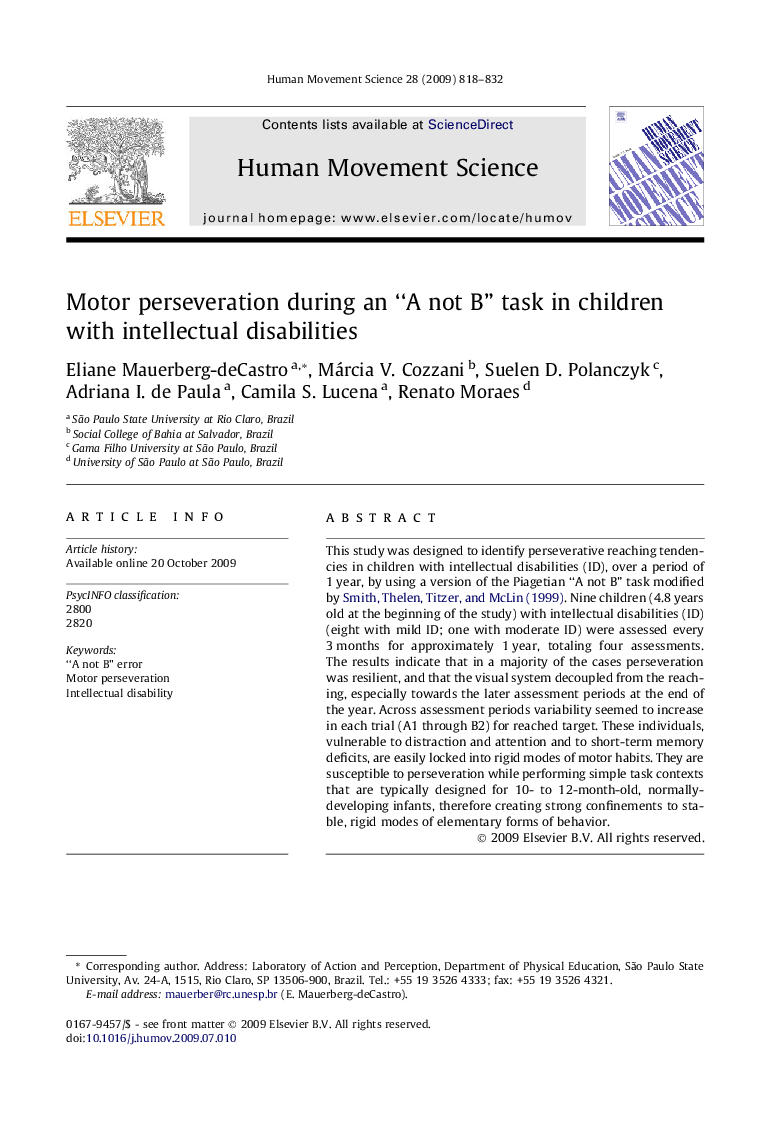| Article ID | Journal | Published Year | Pages | File Type |
|---|---|---|---|---|
| 928761 | Human Movement Science | 2009 | 15 Pages |
This study was designed to identify perseverative reaching tendencies in children with intellectual disabilities (ID), over a period of 1 year, by using a version of the Piagetian “A not B” task modified by Smith, Thelen, Titzer, and McLin (1999). Nine children (4.8 years old at the beginning of the study) with intellectual disabilities (ID) (eight with mild ID; one with moderate ID) were assessed every 3 months for approximately 1 year, totaling four assessments. The results indicate that in a majority of the cases perseveration was resilient, and that the visual system decoupled from the reaching, especially towards the later assessment periods at the end of the year. Across assessment periods variability seemed to increase in each trial (A1 through B2) for reached target. These individuals, vulnerable to distraction and attention and to short-term memory deficits, are easily locked into rigid modes of motor habits. They are susceptible to perseveration while performing simple task contexts that are typically designed for 10- to 12-month-old, normally-developing infants, therefore creating strong confinements to stable, rigid modes of elementary forms of behavior.
